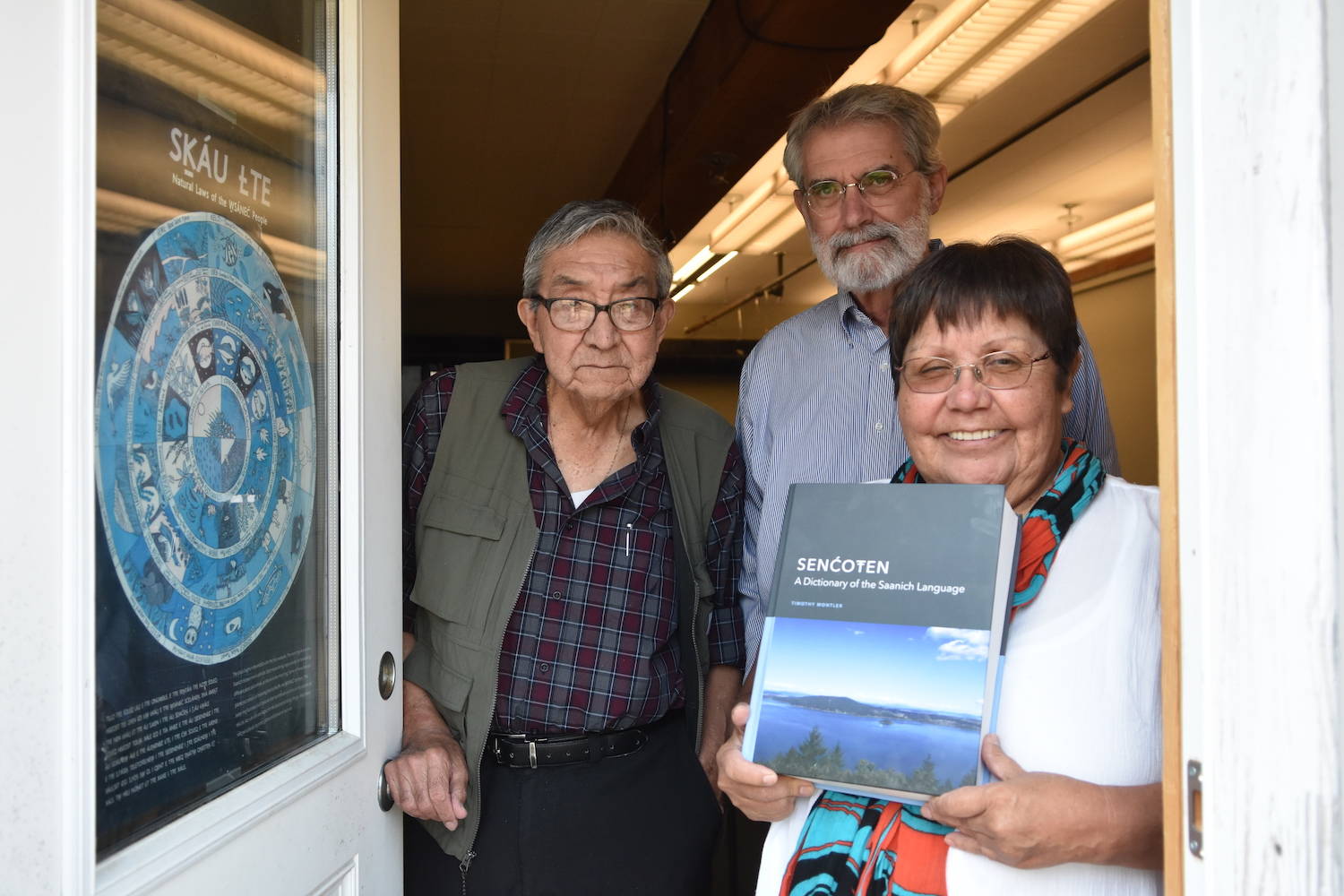Since time immemorial, the SENĆOŦEN language has carried the stories and values of the W̱SÁNEĆ people. Now, for the first time, a 1,500-page dictionary containing over 12,000 words will ensure the language lives on.
Timothy Montler, a linguist and Distinguished Research Professor University of North Texas, has worked for 40 years with SENĆOŦEN speakers to record and define the language. The effort to create a SENĆOŦEN dictionary began in 2012, after Montler worked with elders, educators and tribal councils to create a Klallam dictionary.
Though there have been online resources like FirstVoices that feature recordings and definitions, Belinda Claxton said the process was more personal because Montler worked “hand-in-hand” with the community for so long.
“He actually got sentences from the elders. It doesn’t have just words, it’s got teachings and values.”
The front of the dictionary features the names and photos of the 26 SENĆOŦEN-speaking elders that contributed to the dictionary.
Montler compiled recordings made by himself, Claxton, and others, and built a database of words and definitions, as well as information about grammar. Each entry has an example sentence to accompany it, as well as pronunciations using the International Phonetic Alphabet.
The words are recorded in the SENĆOŦEN alphabet, created by Dave Elliott Sr. in 1978, who turned an oral language into a written one by overstriking the 26 English letters on a standard typewriter with hyphens, slashes, underscores, and accents so no expensive, specialized equipment was required.
“Once it’s here, it’s like it’s saved,” said Lou Claxton, Belinda’s brother. “A lot of words I forgot myself. And my mother spoke nothing but SENĆOŦEN to me when I was a kid,” adding that when he was a child, he said to his mother, “I’d rather learn English.”
“Now some of the language that we might have forgotten, it’s down here [in this book],” said Lou.
RELATED: For Stelly’s Indigenous students, a Celebration Week is just the start
Lou and Belinda’s’ mother Elsie was the last monolingual speaker of SENĆOŦEN, but she could comprehend English fairly well. Before she died in 2000 at the age of around 93, she contributed to many recordings of SENĆOŦEN words and phrases.
“It wasn’t very long ago when everybody on this whole Peninsula, and on the Gulf Islands, spoke only SENĆOŦEN…before the big invasion of English speakers came in,” said Montler.
However, many children lost their language at residential schools, where their language was forbidden.
Montler said the language contains “stories for all the places, every little spring and bay and inlet.” SȾÁ¸EU¸TW̱ , or Tsawout, means “higher up,” said Lou.
ȽEL¸TOS, or James Island, means “splashed in the face,” said Montler, who also said the island was home to a rare breed of white deer.
“For the longest time, nobody had any evidence of our language on paper like it is now. The teachers can hardly wait to get their hands on that,” said Lou.
Every word has been extensively checked for accuracy, with their definitions and example sentences attributed to the elders who told Montler.
Belinda hopes the language will be taught more in public schools, but it will be first used at the tribal school.
“At one time or another, we thought the fire was going to go out. But it survived, our language survived, and I’m so happy,” said Belinda.
reporter@peninsulanewsreview.com
Like us on Facebook and follow us on Twitter
